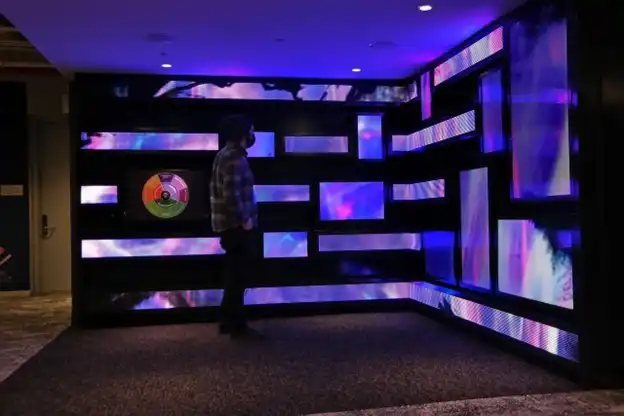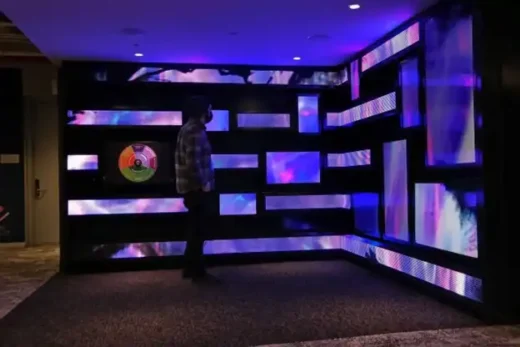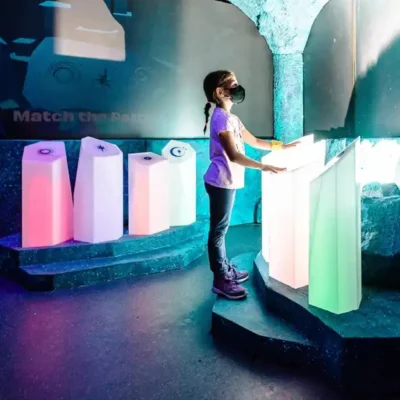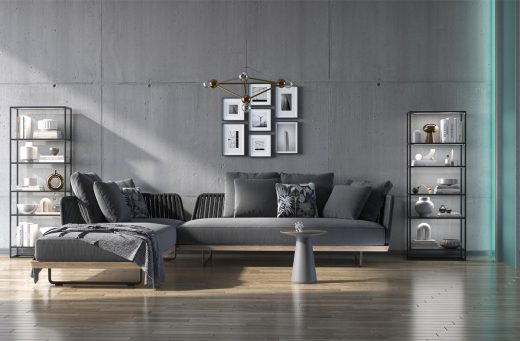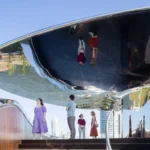Jill Shah Architect and Creative Technologist, Designing the Modern Building
Jill Shah Architect and Creative Technologist
6 May 2025
Designing the Modern Building : Insights From Architect & Creative Technologist Jill Shah
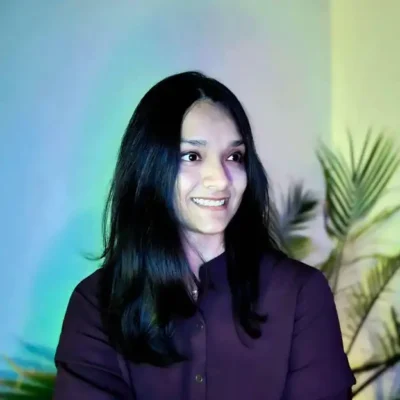
In an era defined by rapid technological advancement and a growing emphasis on sustainability and human-centric design, the field of architecture and experience design is undergoing a profound transformation. At the forefront of this evolution is Jill Shah, an architect-turned-creative technologist who is revolutionizing how we perceive and interact with built environments. With over four years of professional experience in the art and themed entertainment industry, Shah is committed to designing interactive and thought-provoking experiences that push the boundaries of what’s possible.
Shah’s journey began with a deep appreciation for art, which continues to infuse her work with a sense of imagination, beauty, and emotional resonance. As a creative technologist and experience designer, she creates immersive and transformative environments that awaken the senses, challenge perceptions, and leave a lasting impact. Driven by a passion for humanizing technology, Shah’s work explores how technological advancements can enhance experiences and entertainment, fostering a deeper connection between people and their surroundings.
A graduate of the MFA program in Design and Technology at Parsons School of Design, Shah has since served as an Experiential Production Designer at Future Colossal, an award-winning innovation lab that designs and executes memorable interactive spaces. Her commitment to accessibility extends beyond her professional work. Shah is also a passionate educator, having taught design classes and facilitated technical workshops at The New School in New York City.
Designing for Impact: The Accenture Hives
When embarking on a large-scale project like the Accenture Hives, Shah emphasizes the importance of a structured yet flexible design process. It all starts with intense brainstorming sessions with the team, dissecting the project brief, identifying core objectives, and defining the challenges. Shah advocates for a “shoot-for-the-moon” approach in the initial stages, where every idea, regardless of its perceived feasibility, is put on the table. This rapid-fire ideation allows for a broad exploration of possibilities before filtering and refining the concepts. The process is cyclical, involving constant thinking, filtering, and iteration. The key, Shah notes, is knowing when to stop, balancing intuition with practical constraints like budget and timeline.
“Throughout this phase, two critical factors remain at the forefront: the user and the client,” says Shah. “While creativity drives our process, we’re ultimately in a service industry, meaning the client’s needs and objectives take precedence. As designers, we have the responsibility to guide them—not just toward what they think they want, but toward what truly solves their challenge. This can sometimes mean helping them uncover the real problem they need to address.”
Once the foundational ideas are solidified, the team transitions into the design phase. This involves defining user journeys through diagrams, developing the architectural and spatial design, and mapping out the digital or software components. Potential constraints—technical, logistical, or experiential—are identified early on to ensure the vision remains executable. Early prototyping and interactive simulations may also be used to test core concepts before full-scale production begins.
“By maintaining a flexible yet structured approach, we ensure that the final design is not only innovative but also practical, user-centered, and aligned with the client’s goals,” Shah explains.
Sustainable Practices: Designing for the Future
In a world increasingly aware of its environmental impact, sustainability is no longer an afterthought but a fundamental design consideration. Shah emphasizes incorporating eco-friendly practices as a natural part of the design process. “It starts early in the process – right from design decisions regarding the usage of space, power need calculations, the right material choices, or thinking about the project long term.”
Shah deploys various strategies to reduce waste, including modular design builds, energy-efficient lighting, and the selection of recycled, recyclable, or responsibly sourced materials.
However, sustainability goes beyond material choices; it’s also about longevity. “A well-defined space should not be disposable but instead evolve with time,” Shah believes. Her design process focuses on adaptability, whether through multi-use components, tech-driven interactivity that updates without needing physical replacements, or simply designing in a way that keeps people engaged for longer.
Enhancing Productivity: The Human-Centric Workplace
The COVID-19 pandemic has fundamentally altered perceptions of the workplace, leading to a re-evaluation of traditional office design. “There’s an ongoing debate, and really, a divide between people and businesses who want their employees to come back to the office versus people who think they are more productive from home,” Shah observes. This has necessitated a reimagining of workplaces, leveraging the power of experiential design.
“The goal isn’t just to create a workspace but to design an environment that actively encourages people to want to be there,” Shah explains. This involves giving employees an incentive beyond obligation, through spaces that foster collaboration, zones for deep focus, or amenities that make the office feel like more than just a place to work.
Shah believes that a well-designed space should support people, not just business operations. “A well-designed space doesn’t force productivity—it naturally enables it,” she emphasizes.
Balancing Act: Client Visions and User Needs
Navigating the relationship between client directives and user needs is a crucial aspect of Shah’s work. She acknowledges the diverse range of clients, from those who grant full creative freedom to those with specific visions. “Client management is a skill that comes with experience, but even then, it’s never an exact science. Every project brings a new challenge in balancing creative expertise with client expectations.”
Shah firmly believes that clients hire designers for their expertise. “My job isn’t just to make a client happy—it’s to achieve their goals in the best possible way. That distinction is important. Good design isn’t about saying yes to everything; it’s about guiding clients toward solutions that truly work, even if that means having some tough conversations along the way.”
However, Shah also recognizes the importance of knowing when to adapt. “You can be confident in your expertise, advocate for the right approach, and still recognize that sometimes, the best move is to listen and adapt. It’s always a balancing act—pushing for the best outcome while respecting the client’s vision and constraints.”
Understanding the End-User: A Core Principle
Understanding the user’s needs is paramount to Shah’s design philosophy. “It’s a mix of research, intuition, and iteration,” she explains. The process begins by stepping into the user’s shoes—understanding who they are, what they need, and how they will experience the space or product. When possible, Shah observes users in real-world settings, conducting site visits, interviews, and simply paying attention to how people naturally interact with similar environments.
“From there, it’s about distilling insights,” says Shah. “Patterns start to emerge—pain points, behaviors, unspoken needs—and that’s where the real design work begins.” The information gleaned is then used to map out user journeys, asking critical questions: Is this intuitive? Does it engage? Does it actually solve a problem?
However, Shah acknowledges the potential discrepancy between what users say they need and what they actually need. “That’s why testing and iteration are key. Whether it’s rapid prototyping, interactive models, or simple walkthroughs, I like to build in room for real feedback. The best solutions come from a mix of research, creative problem-solving, and the ability to adapt when something just isn’t working.”
Jill Shah’s work embodies the future of design, one where technology, sustainability, and human-centricity converge to create meaningful and impactful experiences. Her insights offer valuable lessons for professionals seeking to navigate the complexities of the modern built environment and create spaces that inspire, engage, and empower.
Visit Jill Shah’s website, jillshahh.com.
Comments on this guide to Jill Shah Architect and Creative Technologist insights article are welcome.
Furniture
Furniture Articles
Choosing the right restaurant furniture
Choose best restaurant furniture for more tourists
Workspace Building Design
Comments / photos for the Jill Shah Architect and Creative Technologist insights page welcome.

